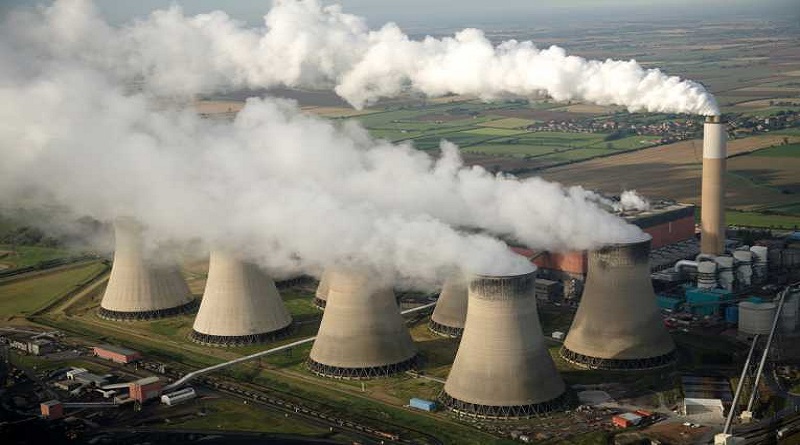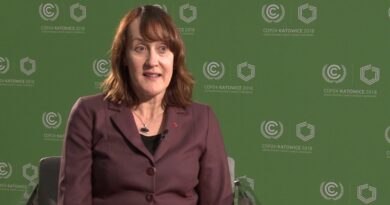How Paris Agreement triggers divestment from coal – Study
The fact that countries are now implementing the Paris Climate Change Agreement will on balance lead to more divestment from coal and other fossil fuels than it will spark a rush to burn up the world’s remaining fossil fuel reserves, according to a new study.
The study published in Nature finds that divestment beats the ‘green paradox’ – the phenomenon of an increase in carbon emissions, at least temporarily, in response to climate policies aimed at reducing emissions – if substantial carbon pricing is announced.
“We find that ten years before carbon pricing policies are actually introduced, investors start pulling their money out of the coal power sector,” said lead-author Nico Bauer from the Potsdam Institute for Climate Impact Research (PIK).
“They shy away from investing in fossil fueled power plants as they realise that the lifetime during which these plants will make money will be curtailed by the future climate policy. We find this divestment reduces emissions by between 5 to 20%, depending on the strength of the climate policy, already in the time before the climate policy gets implemented.”
Under the 2015 Paris Climate Change Agreement, countries agreed to reduce greenhouse gas emissions and limit the rise in global average temperatures to well below two degrees Celsius and as close as possible to 1.5 degrees above pre-industrial levels. A strong focus on renewable energy sources and a substantial decline in fossil fuel production and consumption is key to achieving the Paris Agreement goals.
The research says that putting the Paris Agreement into practice will trigger opposite reactions by investors on the one hand and fossil fuel owners on the other hand. For instance, the anticipation of strong CO2 reduction policies might drive up carbon emissions since fossil fuel owners would accelerate their resource extraction to maximize profits before the regulations kick in.
Yet at the same time, the study notes, investors may stop putting their money into coal power plants in order to avoid investing in potentially stranded assets. On balance, consequently, overall CO2 emissions would be effectively reduced.
Coal is particularly susceptible to carbon pricing. “Adding a carbon price of USD 20 per ton of CO2 doubles the cost of using coal,” noted co-author Christophe McGlade from University College London and the International Energy Agency. “Power sector investors see that coal power plants will become uncompetitive under carbon pricing and so shift their portfolios towards low-carbon sources of electricity.”
“Oil is much less sensitive to carbon pricing. While we found that the green paradox effect can emerge in oil markets – with major oil resource holders boosting oil production because of fears their resources will be left stranded – this is likely to be much smaller than the divestment effect that reduces coal use,” added McGlade.
Computer simulations of energy markets’ future dynamics are commonly used to investigate the economic effects of policies. “We ran our simulations with a variety of CO2 pricing levels, steadily reaching between USD25 and USD 300 per ton CO2 by 2050, with a medium scenario reaching USD 100.”
“These taxes were introduced with a number of different delays to represent various degrees of climate policy stringency and credibility and see how fossil fuel markets react in anticipation of such climate policies,” said co-author Jérôme Hilaire from PIK and the Mercator Research Institute on Global Commons and Climate Change.
“This is to account for uncertainties, but the divestment effect prevails over the green paradox effect in almost all tax cases investigated regardless of the implementation delay, and therefore decreases overall emissions. Only if CO2 pricing starts very late, for example not before 2050, and then at a very low level, anticipation by market forces leads to an increase in CO2 emissions instead of a decrease,” he added.
If different CO2 pricing regulations at different price levels were to be introduced in different countries, the authors find that while some emissions-intensive production facilities move from places of high regulation to those with low standards, this effect is limited.
Speaking of the findings of the study, co-author Paul Ekins from UCL, who is also a member of the European Union Commission’s High-Level Panel on Decarbonisation Pathways, said: “CO2 emissions pricing schemes are emerging in China, the EU is currently in the processes of fixing its trading scheme, and CO2 prices are in place in the UK, in Chile, in Canada, and even in California, the sixth-largest economy in the world.
“The Paris agreement delivered a strong signal that policy makers take climate change seriously and are ready and willing to deliver on the necessary emissions reductions. By anticipating the implementation of policies to tackle climate change, market forces will likely reduce emissions, helping us on the first step towards achieving deep emissions reductions – as long as the policy signals are strong, clear and credible.”




